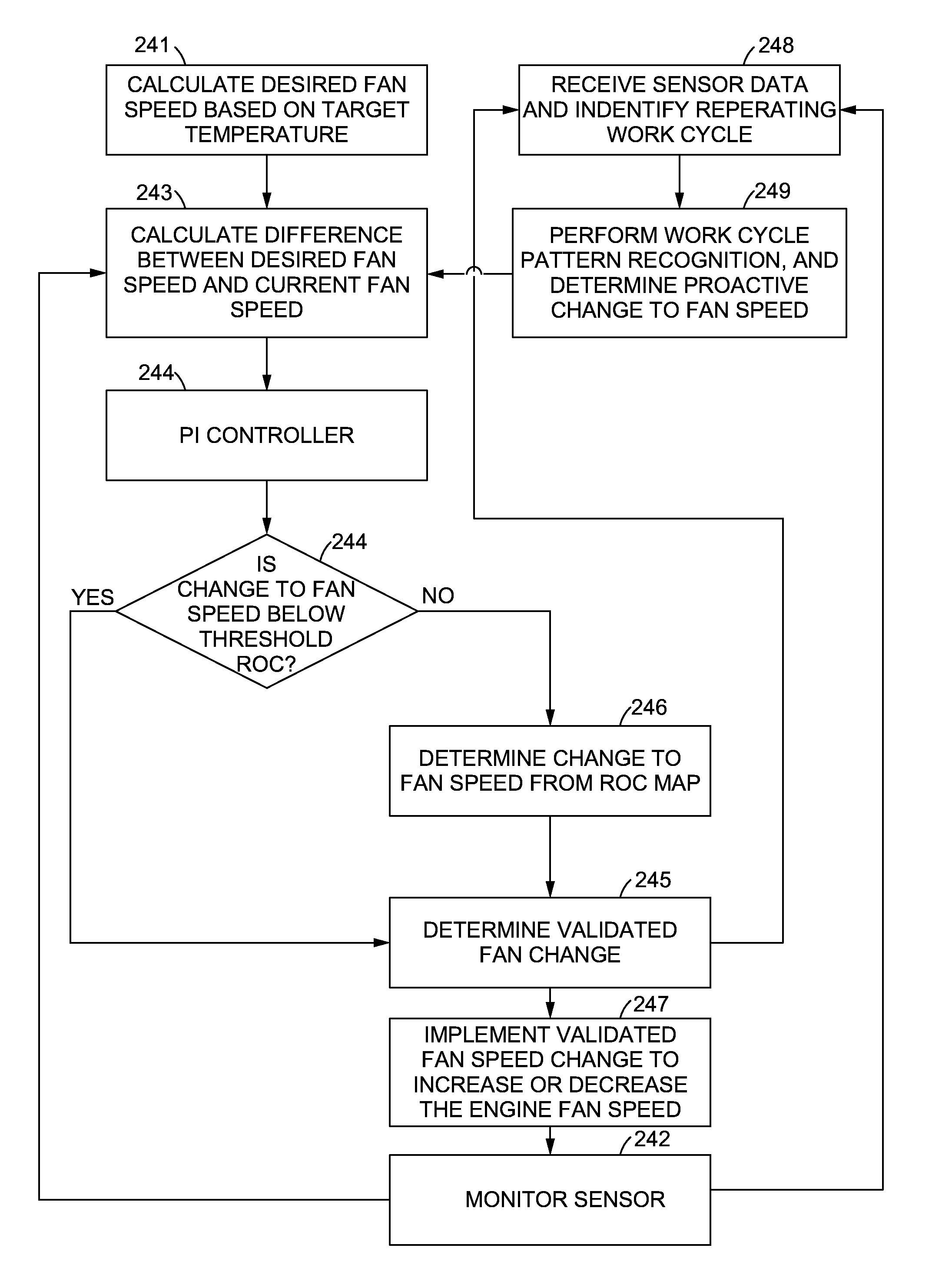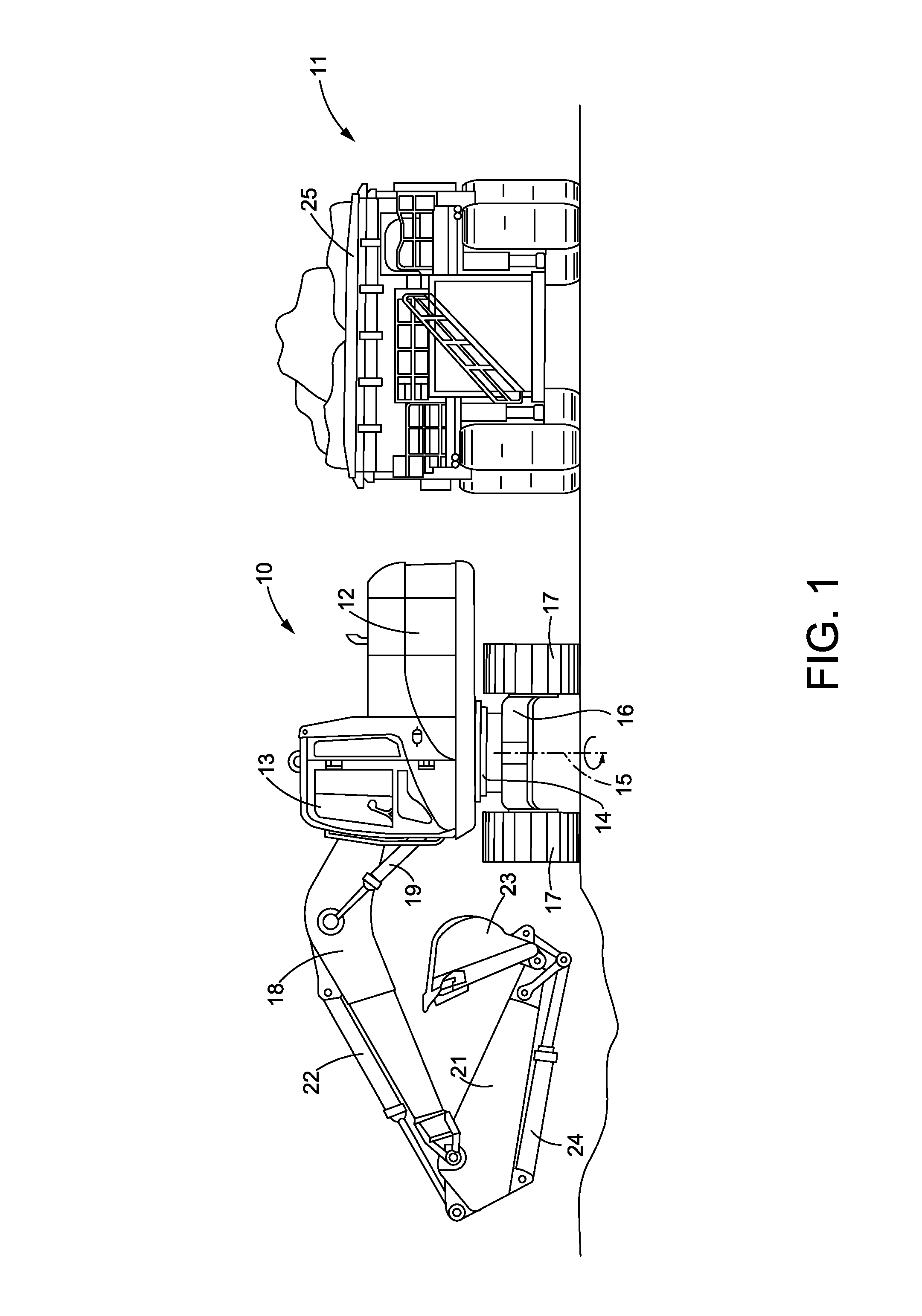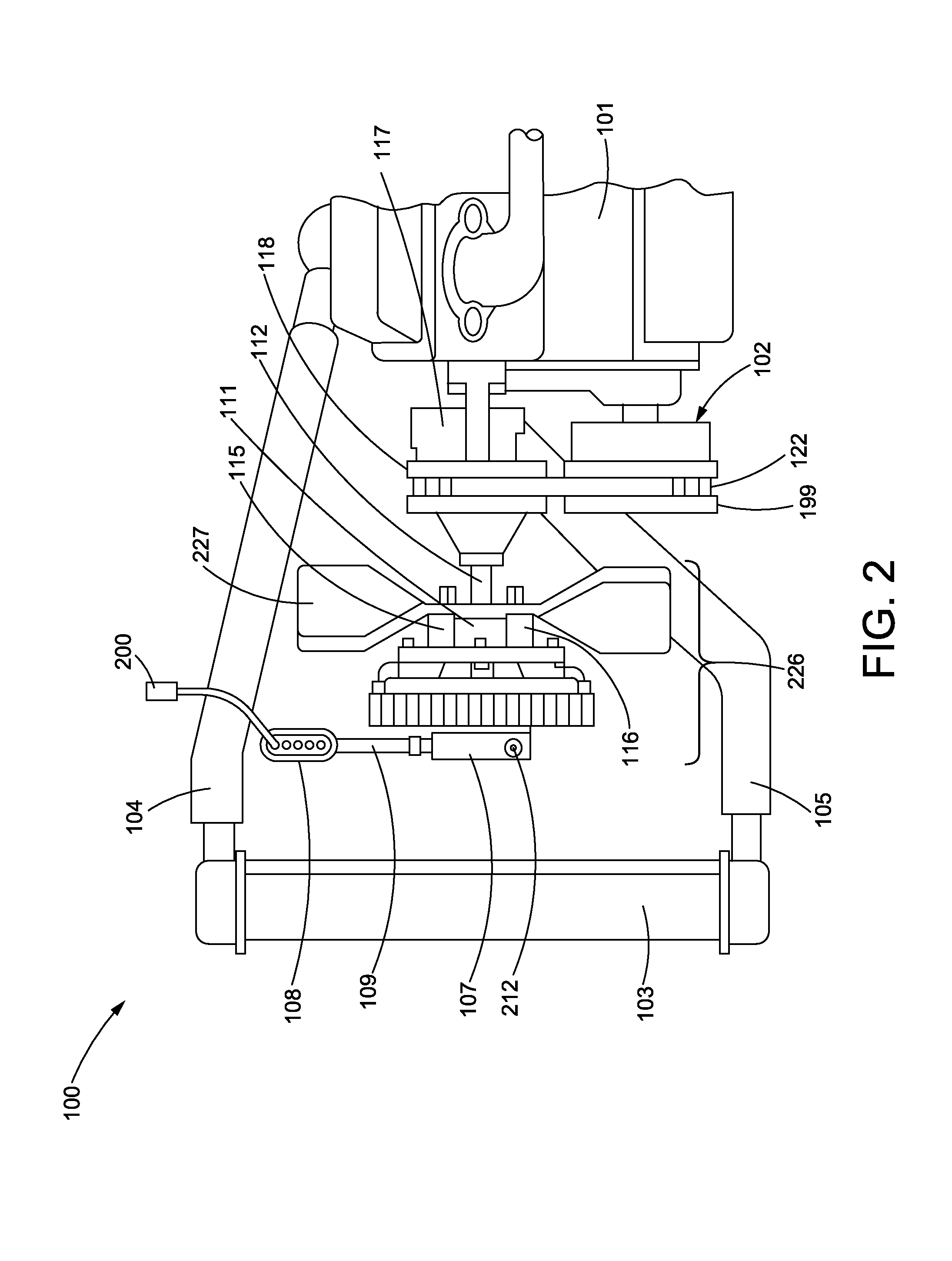Engine fan control system and method
a technology of fan control system and engine, applied in the direction of efficient regulation technology, machines/engines, mechanical equipment, etc., can solve the problems of engine and/or machine components damage, engine and/or engine heat generation during operation, and reduce fuel efficiency
- Summary
- Abstract
- Description
- Claims
- Application Information
AI Technical Summary
Problems solved by technology
Method used
Image
Examples
Embodiment Construction
[0021]FIG. 1 illustrates an excavator 10 and a truck 11, both of which may include engines (not shown) with certain cooling requirements that may be satisfied at least in part by a fan cooling system 100 (also not shown in FIG. 1; see FIG. 2). The excavator 10 may include a chassis 12 and a cab 13, which may be supported by a turret 14. The turret 14 may be rotatable about a vertical axis 15. The turret 14 may be supported by an undercarriage 16, which may include or be coupled to numerous components for driving the ground engaging elements, which may be a pair of tracks 17. The chassis 12 may be coupled to a boom 18 and a boom cylinder 19. The boom 18 may be coupled to a stick 21 and a stick cylinder 22. The stick 21 may be coupled to a bucket 23 and a bucket cylinder 24.
[0022]In a typical cyclic or repetitive work cycle, the excavator 10 may carry out a dig operation or a dig segment in the position shown in FIG. 1 where the bucket 23 is at least partially filled with material. Af...
PUM
 Login to View More
Login to View More Abstract
Description
Claims
Application Information
 Login to View More
Login to View More - R&D
- Intellectual Property
- Life Sciences
- Materials
- Tech Scout
- Unparalleled Data Quality
- Higher Quality Content
- 60% Fewer Hallucinations
Browse by: Latest US Patents, China's latest patents, Technical Efficacy Thesaurus, Application Domain, Technology Topic, Popular Technical Reports.
© 2025 PatSnap. All rights reserved.Legal|Privacy policy|Modern Slavery Act Transparency Statement|Sitemap|About US| Contact US: help@patsnap.com



